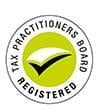How to work out net profit or loss in a co-owned property?
Co-ownership of rental property
The way that rental income and expenses are divided between co-owners varies depending on whether the co-owners are joint tenants, tenants in common or there is a partnership carrying on a business of letting rental properties.
Dividing income and expenses according to legal interest
Co-owners who are not carrying on a business of letting rental properties must divide the income and expenses for the rental property in line with their legal interest in the property. If they own the property as:
- joint tenants, they each hold an equal interest in the property
- tenants in common, they may hold unequal interests in the property, for example, one may hold a 20% interest and the other an 80% interest.
Rental income and expenses must be attributed to each co-owner according to their legal interest in the property, despite any agreement between co-owners, either oral or in writing, stating otherwise.
Example 1: Joint tenants
Mr and Mrs Hitchman own an investment rental property as joint tenants. In the relevant income year, Mrs Hitchman phones us and asks if she can claim 80% of the rental loss. Mrs Hitchman says she is earning $67,000 a year, and Mr Hitchman is earning $31,000. Therefore, it would be better if she claimed most of the rental loss, as she would save more tax. Mrs Hitchman thought it was fair that she claimed a bigger loss because most of the expenses were paid out of her wages. Under a partnership agreement drawn up by the Hitchmans, Mrs Hitchman is supposed to claim 80% of any rental loss.
We told Mrs Hitchman that where two people own a rental property as joint tenants, the net rental loss must be shared in line with their legal interest in the property. Therefore, the Hitchmans must each include half of the total income and expenses in their tax returns.
Any agreement that the Hitchmans might draw up to divide the income and expenses in proportions other than equal shares has no effect for income tax purposes. Therefore, even if Mrs Hitchman paid most of the bills associated with the rental property, she would not be able to claim more of the rental property deductions than Mr Hitchman.
End of exampleExample 2: Tenants in common
In example 1, if the Hitchmans owned their property as tenants in common in equal shares, Mrs Hitchman would still be able to claim only 50% of the total property deductions.
However, if Mrs Hitchman’s legal interest was 75% and Mr Hitchman’s legal interest was 25%, Mrs Hitchman would have to include 75% of the income and expenses in her tax return and Mr Hitchman would have to include 25% of the income and expenses in his tax return.
End of exampleInterest on money borrowed by only one of the co-owners which is exclusively used to acquire that person’s interest in the rental property does not need to be divided between all of the co-owners.
If you don’t know whether you hold your legal interest as a joint tenant or a tenant in common, read the title deed for the rental property. If you are unsure whether your activities constitute a rental property business, see Partners carrying on a business of letting rental properties.
Co-owners of an investment property (not in business)
A person who simply co-owns an investment property or several investment properties is usually regarded as an investor who is not carrying on a business of letting rental properties, either alone or with the other co-owners. This is because of the limited scope of the rental property activities and the limited degree to which a co-owner actively participates in rental property activities.
Example 3: Co-owners who are not carrying on a business of letting rental properties
The Tobins own, as joint tenants, two units and a house from which they derive rental income. The Tobins occasionally inspect the properties and also interview prospective tenants. Mr Tobin performs most repairs and maintenance on the properties himself, although he generally relies on the tenants to let him know what is required. The Tobins do any cleaning or maintenance that is required when tenants move out. Arrangements have been made with the tenants for the weekly rent to be paid into an account at their local bank. Although the Tobins devote some of their time to rental income activities, their main sources of income are their respective full-time jobs.
The Tobins are not partners carrying on a business of letting rental properties. They are only co-owners of several rental properties. Therefore, as joint tenants, they must each include half of the total income and expenses in their tax returns, that is, in line with their legal interest in the properties.
End of examplePartners carrying on a business of letting rental properties
Most rental activities are a form of investment and do not amount to carrying on a business. However, where you are carrying on a business of letting rental properties in partnership with others, you must divide the net rental income or loss according to the partnership agreement. You must do this whether or not the legal interests in the rental properties are different to the partners’ entitlements to profits and losses under the partnership agreement. If you do not have a partnership agreement, you should divide your net rental income or loss between the partners equally, see Example 4.
Example 4: Co-owners who are carrying on a business of letting rental properties
The D’Souzas, own a number of rental properties, either as joint tenants or tenants in common. They own eight houses and three apartment blocks (each apartment block comprising six residential units) making a total of 26 properties.
The D’Souzas actively manage all of the properties. They devote a significant amount of time, an average of 25 hours per week each, to these activities. They undertake all financial planning and decision making in relation to the properties. They interview all prospective tenants and collect all the rents. They carry out regular property inspections and attend to all of the everyday maintenance and repairs themselves or organise for them to be done on their behalf. Apart from income Mr D’Souza earns from shares, they have no other sources of income.
The D’Souzas are carrying on a business of letting rental properties. This is demonstrated by:
- the significant size and scale of the rental property activities
- the number of hours the D’Souzas spend on the activities
- the D’Souzas’ extensive personal involvement in the activities, and
- the business-like manner in which the activities are planned, organised and carried on.
Mr and Mrs D’Souza have a written partnership agreement in which they agreed to carry on a business of letting rental properties. They have agreed that Mrs D’Souza is entitled to a 75% share of the partnership profits or losses and Mr D’Souza is entitled to a 25% share of the partnership profits or losses.
Because the D’Souzas are carrying on a business of letting rental properties, the net profit or loss it generates is divided between them according to their partnership agreement (in proportions of 75% and 25%), even if their legal interests in the rental properties are equal, that is, they each own 50%.


































